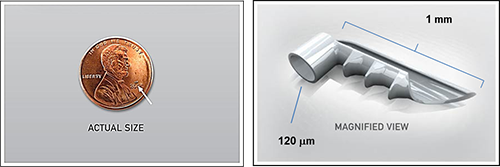Treatment options have come a long way, not only to improve the lives of people suffering from glaucoma but to help arrest the disease before vision loss occurs if diagnosed early. Treatment modalities for glaucoma include once-daily prescription eye drops, laser, or surgery (including inserting micro stents during cataract surgery).
The Selective Laser Trabeculoplasty (SLT)
The SLT reduces intraocular pressure (IOP) with virtually no side effects eliminating or reducing the number of prescription medications, eye drops, surgery, and other invasive treatments required to control the disease. This therapy can be administered in the ophthalmologist’s office. Relatively painless, the SLT does not cause scarring or damage to the eye like other laser treatments and has been shown to effectively keep pressure lower for several years.
“After using drops for 2-3 years to control the glaucoma, my left eye grew worse than my right eye. Dr. Wagle suggested I try the SLT laser. I was hesitant about laser treatment, but Dr. Wagle explained how it worked and that there would be no pain. There was no pain and my pressure went down a lot in my left eye. I’ve seen improvement with both treatments, but nothing as significant as with the laser. With these treatments, I know that I can continue to enjoy my reading and get to my fitness center 3 days a week,” said Mrs. Segura, long-time patient of Dr. Wagle.
The iStent® Trabecular Micro-Bypass Stent
FDA-approved for use in conjunction with cataract surgery, the iStent, can reduce eye pressure in adult patients with mild-to-moderate open-angle glaucoma currently being treated with glaucoma medicine.
The world’s tiniest medical device—iStent—is 20,000 times smaller than the intraocular lenses (IOL) used in your cataract surgery. iStent works like the stents used to prevent heart attacks and strokes. It increases the eye’s ability to drain fluid thus reducing the pressure in your eye.

- iStent creates a permanent opening through the blockage to improve the eye’s natural outflow.
- Restoring this mechanism lowers and controls pressure within the eye.
Implanted during your cataract surgery, iStent begins working to safely and effectively manage pressure. Patients who receive iStent may experience a reduction in glaucoma medications, but this will be at the discretion of the physician. This is important because once diagnosed, most patients will spend the rest of their lives putting one, two or even three different kinds of drops in every day. Many find all of these drops can be inconvenient, potentially expensive and like any medication, the drops may have side effects.
Indication for use: The iStent® Trabecular Micro-Bypass Stent (Models GTS100R and GTS100L) is indicated for use in conjunction with cataract surgery for the reduction of intraocular pressure (IOP) in adult patients with mild-to-moderate open-angle glaucoma currently treated with ocular hypotensive medication.
Contraindications: The iStent® is contraindicated in eyes with primary or secondary angle-closure glaucoma, including neovascular glaucoma, as well as in patients with retrobulbar tumor, thyroid eye disease, Sturge-Weber Syndrome, or any other type of condition that may cause elevated episcleral venous pressure.
Warnings: Gonioscopy should be performed prior to surgery to exclude PAS, rubeosis, and other angle abnormalities or conditions that would prohibit adequate visualization of the angle that could lead to improper placement of the stent and pose a hazard. The iStent® is MR-Conditional meaning that the device is safe for use in a specified MR environment under specified conditions, please see the label for details.
Precautions: The surgeon should monitor the patient postoperatively for proper maintenance of intraocular pressure. The safety and effectiveness of the iStent® have not been established as an alternative to the primary treatment of glaucoma with medications, in children, in eyes with significant prior trauma, chronic inflammation, or an abnormal anterior segment, in pseudophakic patients with glaucoma, in patients with pseudoexfoliative glaucoma, pigmentary, and uveitic glaucoma, in patients with unmedicated IOP less than 22 mmHg or greater than 36 mmHg after “washout” of medications, or in patients with prior glaucoma surgery of any type including argon laser trabeculoplasty, for implantation of more than a single stent, after complications during cataract surgery, and when implantation has been without concomitant cataract surgery with IOL implantation for visually significant cataract.
Adverse Events: The most common post-operative adverse events reported in the randomized pivotal trial included early post-operative corneal edema (8%), BCVA loss of = 1 line at or after the 3-month visit (7%), posterior capsular opacification (6%), stent obstruction (4%) early post-operative anterior chamber cells (3%), and early postoperative corneal abrasion (3%). Please refer to Directions for Use for additional adverse event information.
CAUTION: Federal law restricts this device to sale by, or on the order of, a physician. Please reference the Directions for Use labeling for a complete list of contraindications, warnings, precautions, and adverse events.




